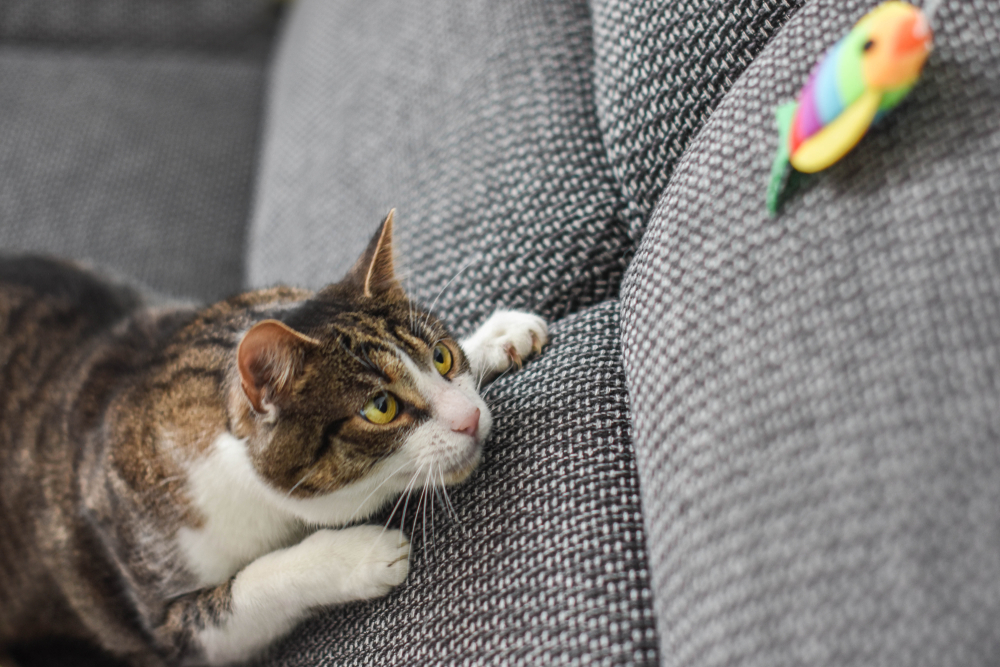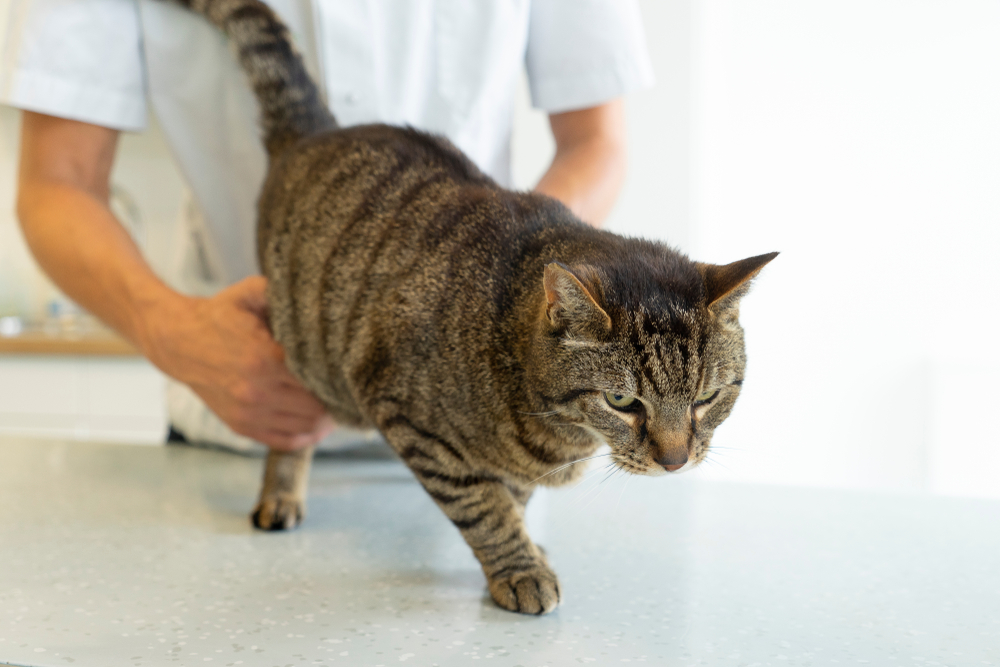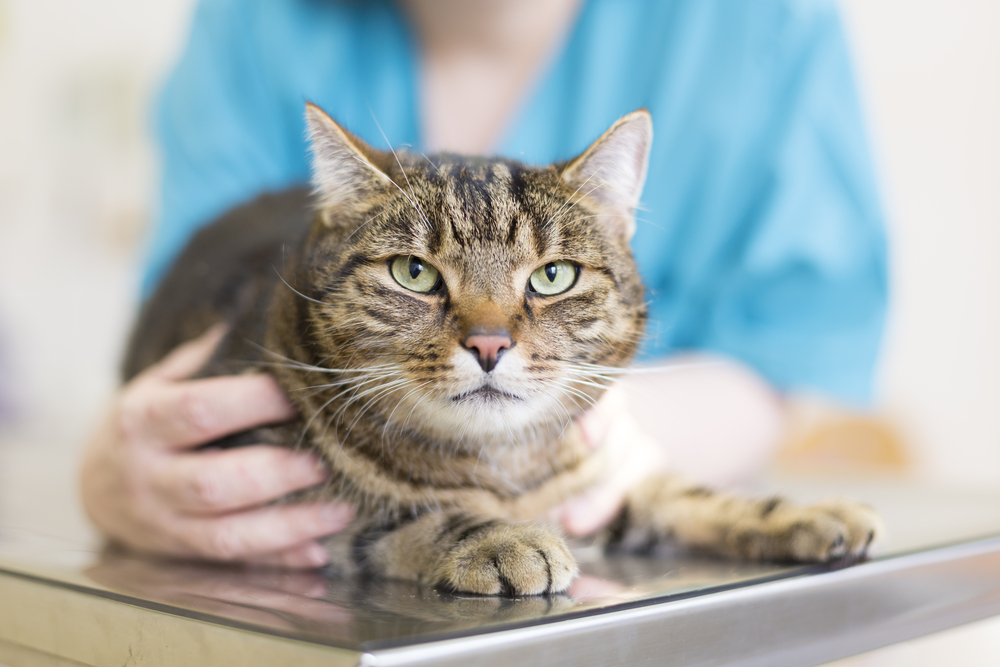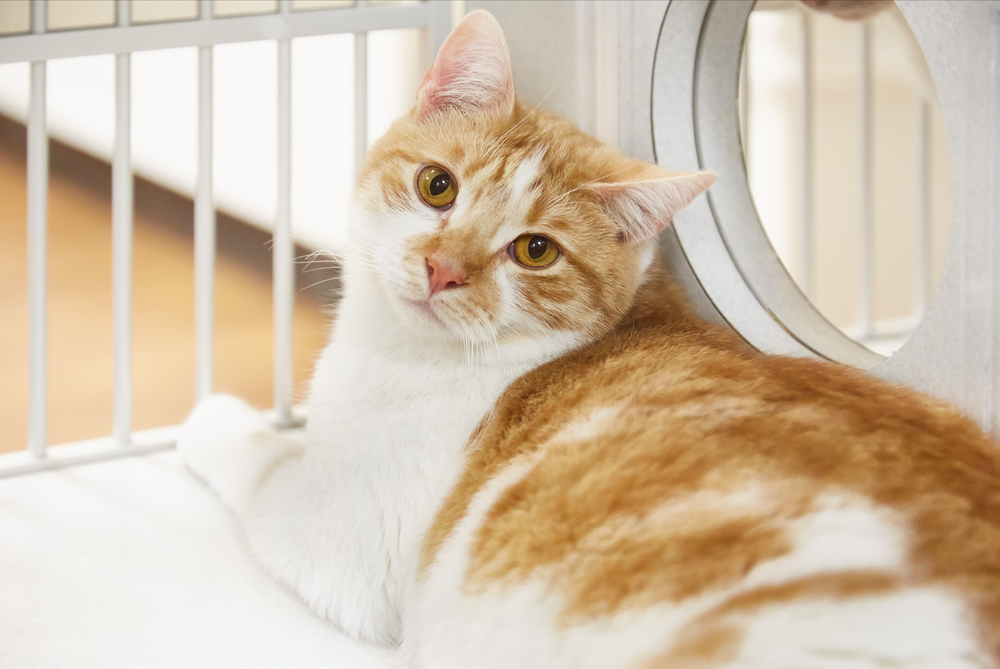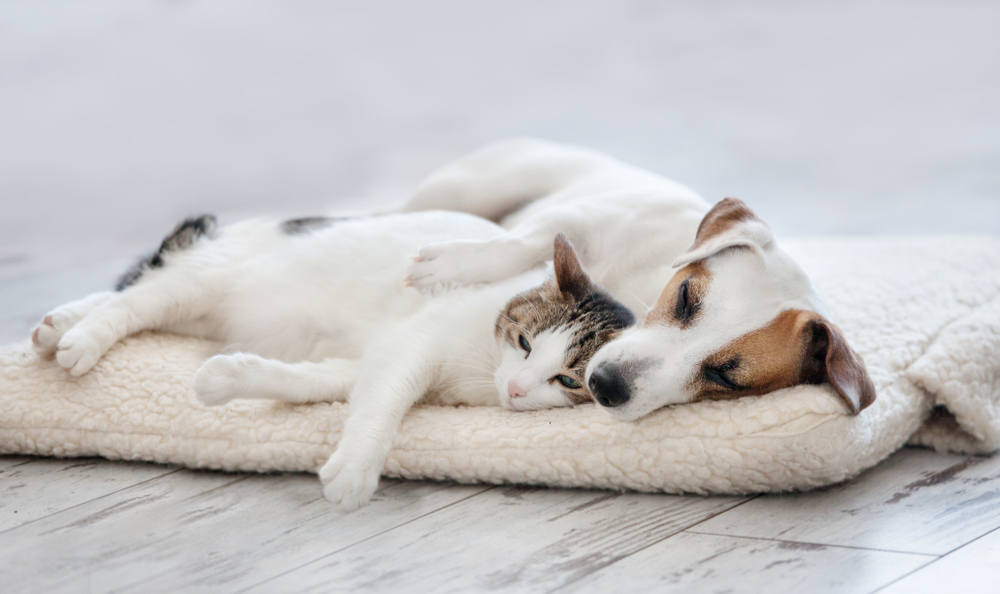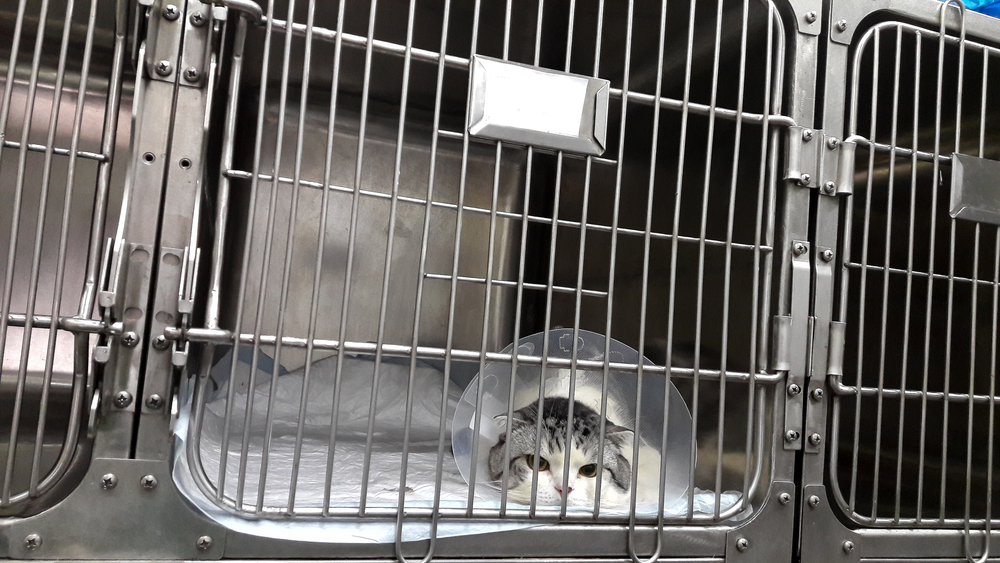
Spending extended time in a shelter or veterinary hospital is stressful for cats. Judith Stella researches how they respond to their environments and what we can do to make life easier for them.
“The quality of the environment is going to impact their welfare, whether in homes, shelters, or research facilities,” she says. “So I’m interested in, how do we optimize that environment to minimize distress, particularly when they are singly housed in cages?”
In a series of studies, she has looked at effects of various environmental factors and, more recently, how cats of different personality types respond. The results provide food for thought about what we should provide for cats who must spend time in confinement.
Surroundings
One study looked at the properties of the room in general, comparing the importance of that environment to what was provided in the cat’s cage. One type of room, which she called “managed,” was quiet, with a consistent caretaker who fed, watered, and cleaned cages at the same time every day. The “unmanaged” room tried to mimic the typical shelter or vet hospital. “We played recordings of dogs barking, had loud music playing, people walking in and out, and we turned lights on and off when we walked in and out of the room.”
It’s not surprising that cats preferred the quiet room, but Stella was surprised to find that the room was even more important to them than the environment in their cage. “In the managed room they did better regardless of whether they had an enriched cage or not,” she says. “Even in the absence of an enriched cage, they still tended to adapt more quickly than the cats in the unmanaged room.”
Personality Variances
Using what that work determined was the optimal environment for the room, the current study then looked at individual differences. Fifty-five cats were housed for three days with enriched cages and a predictable husbandry schedule. Behavior was recorded hourly, as well as the cat’s response to the approach of a familiar and unfamiliar person at the end of the third day.
Owners completed a questionnaire about their cats’ personality traits, and an analysis found that the cats fell into two groups. The 22 cats in Cluster 1 were described in terms such as shy, mellow, and timid; the 33 in Cluster 2 were active, curious, and easygoing. It turned out that the cats’ use of the resources in their cage depended on which cluster they were in. Cats in Cluster 1 tended to be alert and tense and used the hide boxes; cats in Cluster 2 were more relaxed and spent much of the time on the perch.
The results of the familiar/unfamiliar person test also differed by cluster. Owners described cats in Cluster 2 as sociable and cats in Cluster 1 as timid with strangers but friendly with familiar people. Cats in Cluster 1 took a longer time to investigate a new person but were just as social with a familiar person as Cluster 2 cats.
Cats Love Consistency
The “familiar” person was the one who had been taking care of them over the three-day period, whom they hadn’t known previously. This shows that the cats developed something of a relationship in that short period of time and indicates the importance for at least some cats of trying to keep down the number of people they’re exposed to.
“For those cats that are more stressed by unfamiliar people, having a consistent person take care of them every day will help them adjust a little more quickly,” Stella says. In most institutional settings it can’t be the same person every day, but in a shelter, two caretakers per cat instead of many could help. In a hospital, cats might benefit from having the same tech do all the treatments over the course of a day.
The researchers also looked at fecal glucocorticoid metabolites in an attempt to use a physical measure of stress that could be collected non-invasively, but results were not significant. Stella thinks this is partly because the time period was too short, but also because most cats did not produce a sample every day.
“This research aligns with previous work that demonstrated cats display individual variation in their behavior,” says Kristyn Vitale of the Human-Animal Interaction Lab at Oregon State University. “This can be applied by any person who owns or works with cats. It is important to recognize some cats will be more stressed in certain situations than other cats, so we should make management and housing decisions based on each cat’s behavior and stress level. Through a consideration of cat individuality, we can work toward forming healthier cat-human relationships and increase the welfare of cats.”
Stella says that since we won’t always know the cat’s personality type and coping style, for example when admitting them to a hospital or shelter, we can make the environment work for the largest number of cats by being aware of these different needs.
“The cats are going to need different resources, or will use the resources provided to them differently, depending on those temperament traits. For some cats, having a hiding box is going to be imperative for them to be able to cope; for others, maybe not, but providing it for everybody will make sure we cover the ones that really need it,” she says. “Give them those resources in the cage, make sure we keep the room quiet, minimize traffic, have consistent people working as caretakers as much as possible, and it will give the greatest number of cats the best opportunity to cope and adapt to the environment.”
This article was reviewed/edited by board-certified veterinary behaviorist Dr. Kenneth Martin and/or veterinary technician specialist in behavior Debbie Martin, LVT.
Linda Lombardi writes about the animals who share our planet and our homes for magazines including The Bark, websites including National Geographic and Mongabay.com, and for the Associated Press. Her most recent book, co-authored with Deirdre Franklin, is The Pit Bull Life: A Dog Lover’s Companion.

 As for black cats, Campbell says giving clever names to adoption campaigns works. The shelter has been successful with its “Desperate House Cats Looking for Homes” (a play on the popular television shows named Desperate Housewives) and “Pick Your Price” (a play on long-running game show The Price Is Right). Adopters often receive a free bag of cat food and qualify for a free veterinary visit. Black kittens and cats up for adoption often sport pastel-colored collars to help them stand out.
As for black cats, Campbell says giving clever names to adoption campaigns works. The shelter has been successful with its “Desperate House Cats Looking for Homes” (a play on the popular television shows named Desperate Housewives) and “Pick Your Price” (a play on long-running game show The Price Is Right). Adopters often receive a free bag of cat food and qualify for a free veterinary visit. Black kittens and cats up for adoption often sport pastel-colored collars to help them stand out.